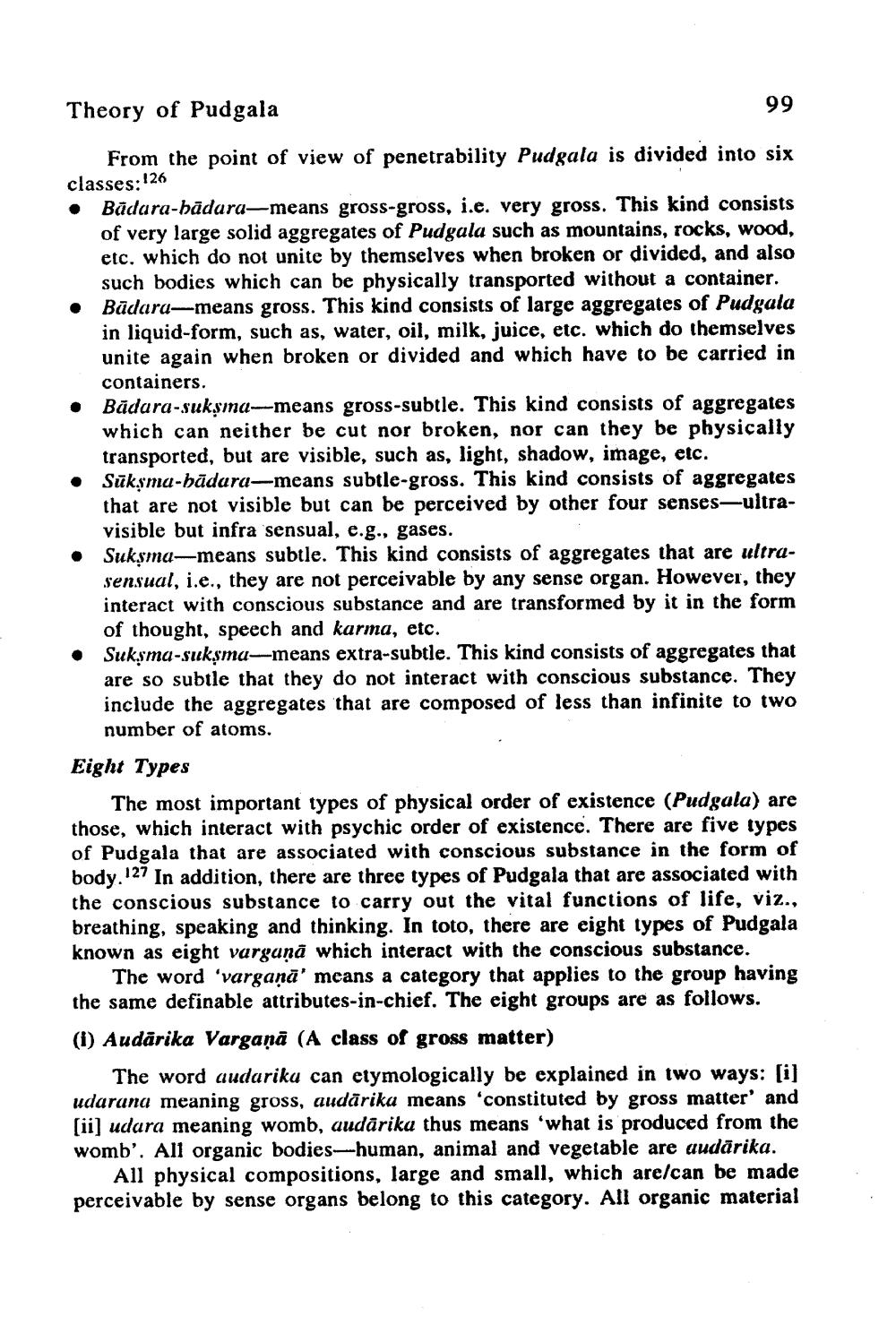________________
Theory of Pudgala
From the point of view of penetrability Pudgala is divided into six classes: 126
•
•
•
•
•
99
•
Badara-badara-means gross-gross, i.e. very gross. This kind consists of very large solid aggregates of Pudgala such as mountains, rocks, wood, etc. which do not unite by themselves when broken or divided, and also such bodies which can be physically transported without a container. Bādara-means gross. This kind consists of large aggregates of Pudgala in liquid-form, such as, water, oil, milk, juice, etc. which do themselves unite again when broken or divided and which have to be carried in
containers.
Bādara-sukṣma-means gross-subtle. This kind consists of aggregates which can neither be cut nor broken, nor can they be physically transported, but are visible, such as, light, shadow, image, etc. Sūkṣma-bādara-means subtle-gross. This kind consists of aggregates that are not visible but can be perceived by other four senses-ultravisible but infra sensual, e.g., gases.
Sukṣma-means subtle. This kind consists of aggregates that are ultrasensual, i.e., they are not perceivable by any sense organ. However, they interact with conscious substance and are transformed by it in the form of thought, speech and karma, etc.
Suksma-sukṣma-means extra-subtle. This kind consists of aggregates that are so subtle that they do not interact with conscious substance. They include the aggregates that are composed of less than infinite to two number of atoms.
Eight Types
The most important types of physical order of existence (Pudgala) are those, which interact with psychic order of existence. There are five types of Pudgala that are associated with conscious substance in the form of body. 127 In addition, there are three types of Pudgala that are associated with the conscious substance to carry out the vital functions of life, viz., breathing, speaking and thinking. In toto, there are eight types of Pudgala known as eight vargaṇā which interact with the conscious substance.
The word 'vargaṇā' means a category that applies to the group having the same definable attributes-in-chief. The eight groups are as follows. (i) Audārika Vargaṇā (A class of gross matter)
The word audarika can etymologically be explained in two ways: [i] udarana meaning gross, audārika means 'constituted by gross matter' and [ii] udara meaning womb, audārika thus means 'what is produced from the womb'. All organic bodies-human, animal and vegetable are audarika.
All physical compositions, large and small, which are/can be made perceivable by sense organs belong to this category. All organic material




